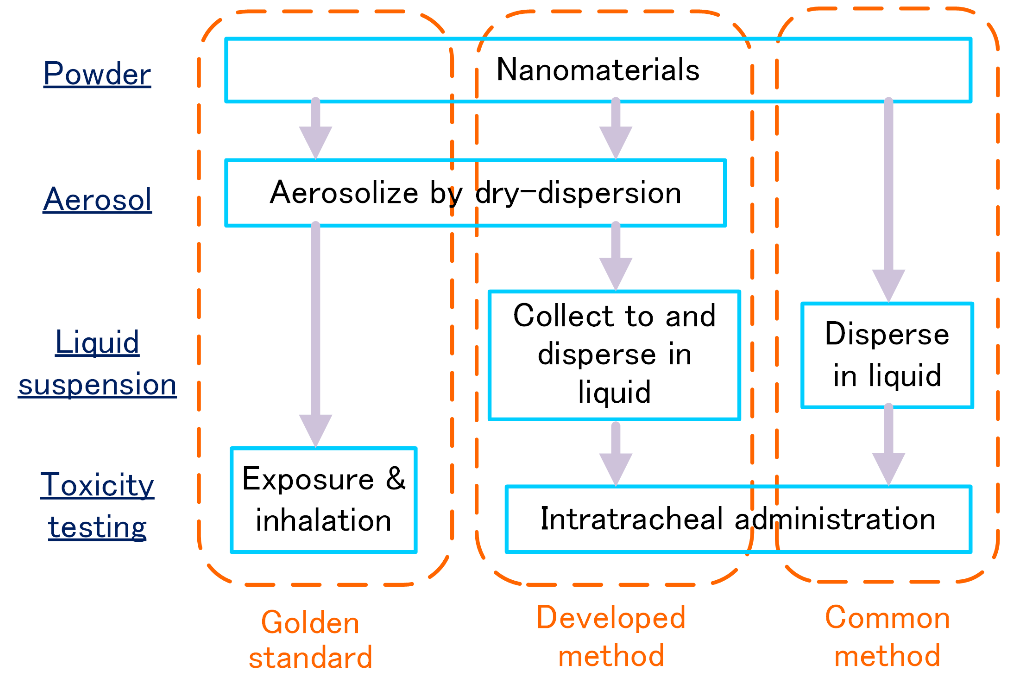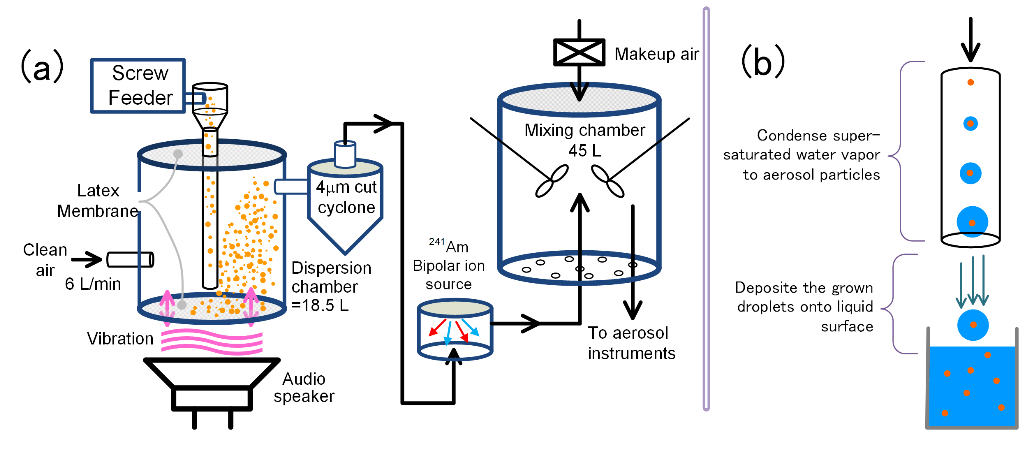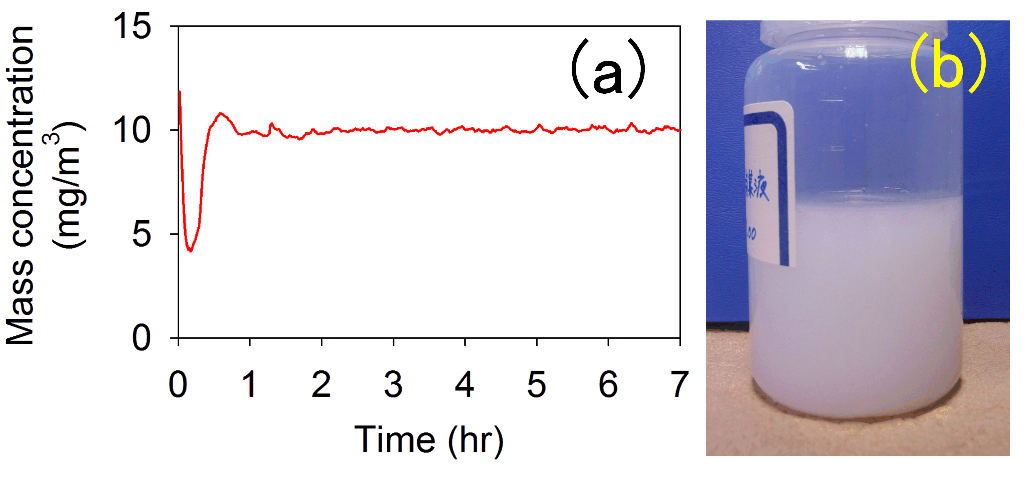Research and development item: ②(d) Development of a method of capturing aerosol particles in liquids
Implemented by the National Institute of Advanced Industrial Science and Technology
Final objective: As a method to make nanomaterial suspension for intratracheal administration-testing applicable to any aerosol sample, we establish a technique for preparing nanomaterial suspensions by directly collecting dry-dispersed nanomaterial powder into liquid. Our objective is to minimize physico-chemical dispersion processes during the preparation of nanomaterial liquid suspension. We compile and release a draft which explains standard procedures of this method.
Intratracheal administration-testing uses liquid suspension, and nanomaterial are often physico-chemically dispersed in liquid. On the other hand, inhalation-testing, which is considered as the golden standard method, uses dry-dispersed aerosol sample. Properties related to the hazard posed by nanomaterial powder may differ between these two samples. By directly collecting the dry-dispersed nanomaterial powder into liquid, the nanomaterial suspensions are expected to have similar properties regarding its toxicity to the dry-dispersed nanomaterial for inhalation-testing.
Figure②(d)-1 Standpoint of the aerosol-to-liquid collection method in the hazard assessment of nanomaterials
Main results:
We developed a technique for directly collecting dry-dispersed nanomaterials into liquid. Two essential elements of this aerosol-to-liquid-collection-method are (1) dry-dispersion technique to aerosolize nanomaterial with high temporal stability and (2) a technique to efficiently collect aerosolized nanomaterial-aggregates in liquid.
With respect to (1), we improved a vibrating membrane aerosol generator of NIOSH-type USA and demonstrated that P25 TiO2 could be aerosolized steadily for extended periods at mass concentration of ≥10 mg/m3 (Figures ②(d)-2(a) and ②(d)-3(a)).
With respect to (2), we uses a condensation particle trap (CPT). Inside the CPT super-saturated water vapor nucleate and condense to aerosolized nanomaterial aggregates, growing them into droplets whose diameter are approximately 3 μm. At the exit of CPT, grown droplets were accelerated through nozzles and deposited by inertia onto a liquid surface. (Figure 2(b)). We demonstrated that P25 TiO2 suspension was successfully prepared by this method. By carrying out 5 to 6 hours of aerosol-to-liquid-collection method, it is possible to prepare a liquid suspension of the TiO2 with concentration of 1 mg/mL and the volume of 5-10 mL (Figure 3(b)).
Figure②(d)-2 Overview of (a) the nanomaterial powder dry aerosolization system and (b) the condensation particle trap
Figure②(d)-3 (a) Aerosol mass concentration of dry-dispersed P25 TiO2, and (b) a photograph showing a liquid suspension of P25 TiO2 prepared using the aerosol-to-liquid collection method.



